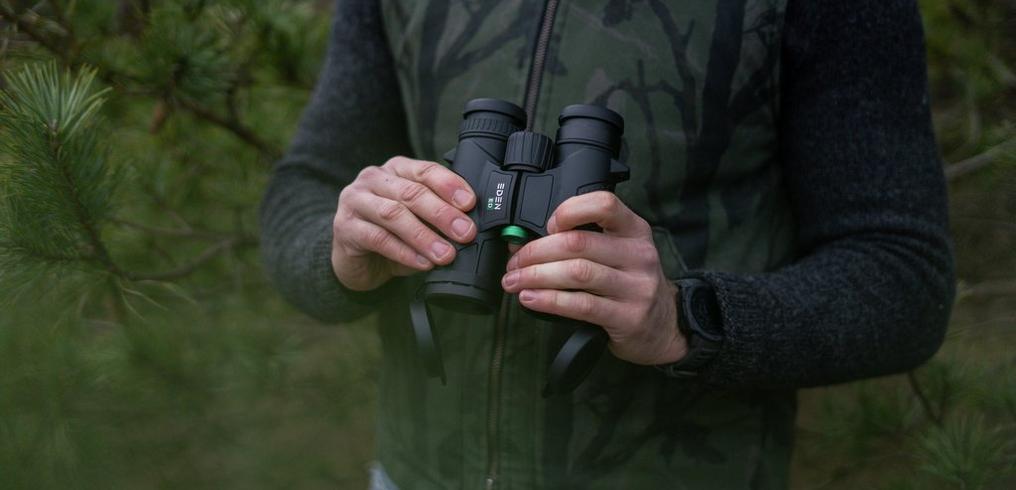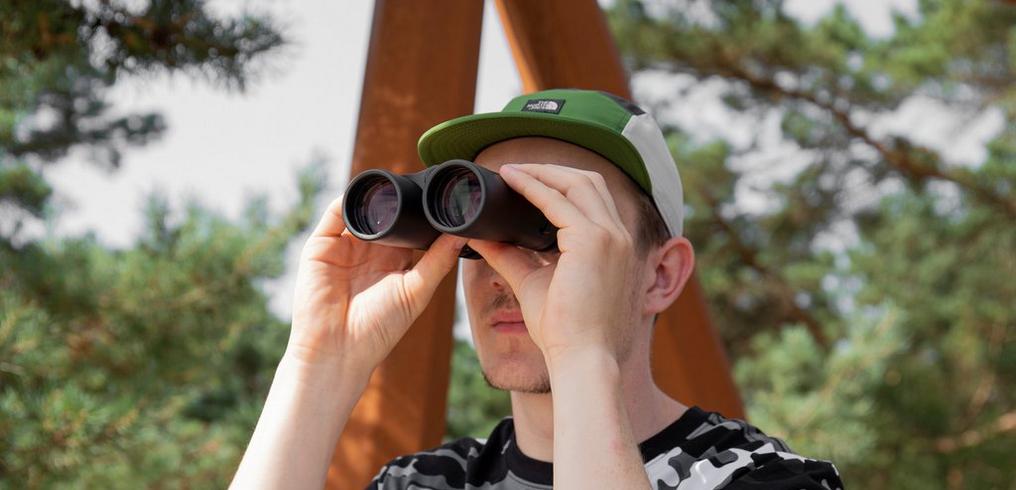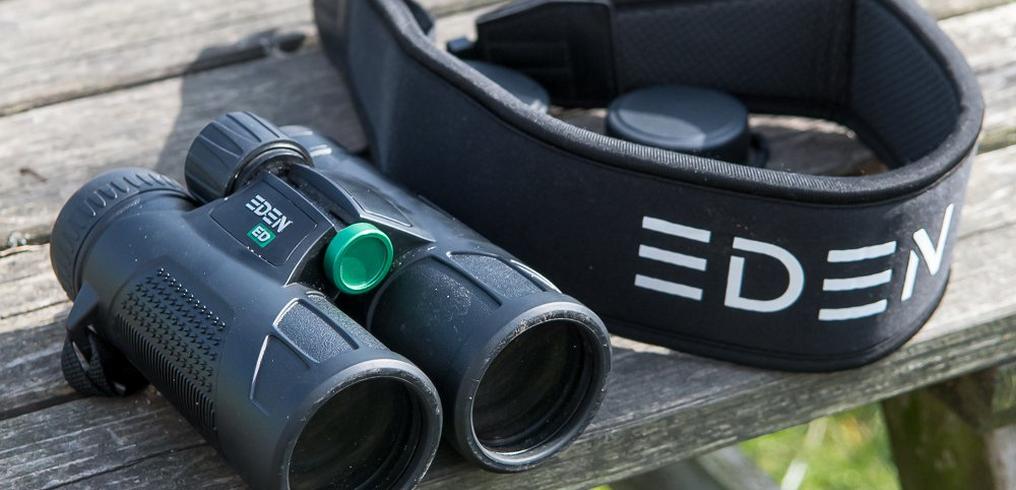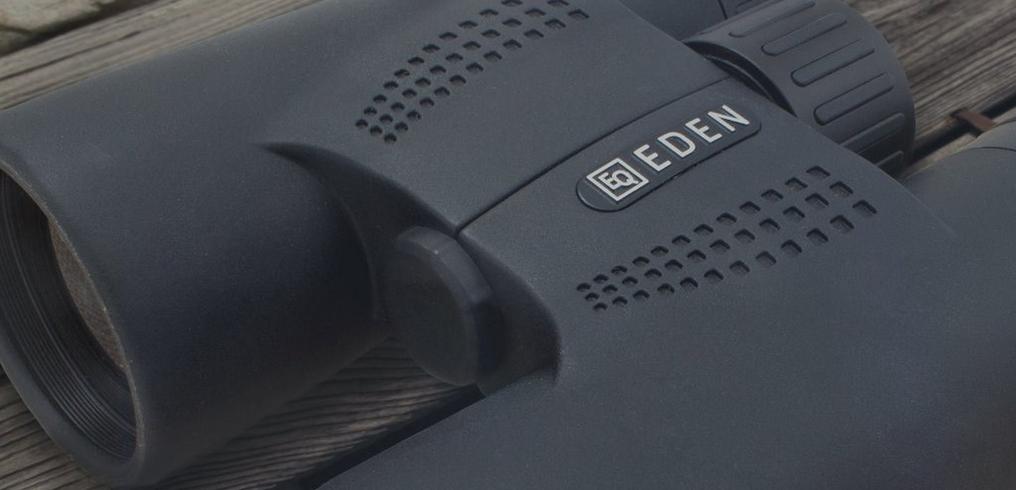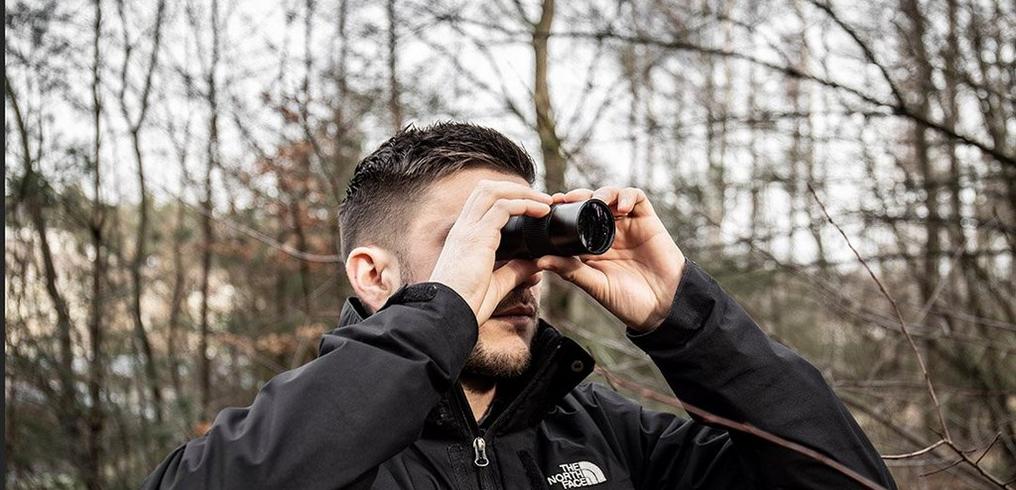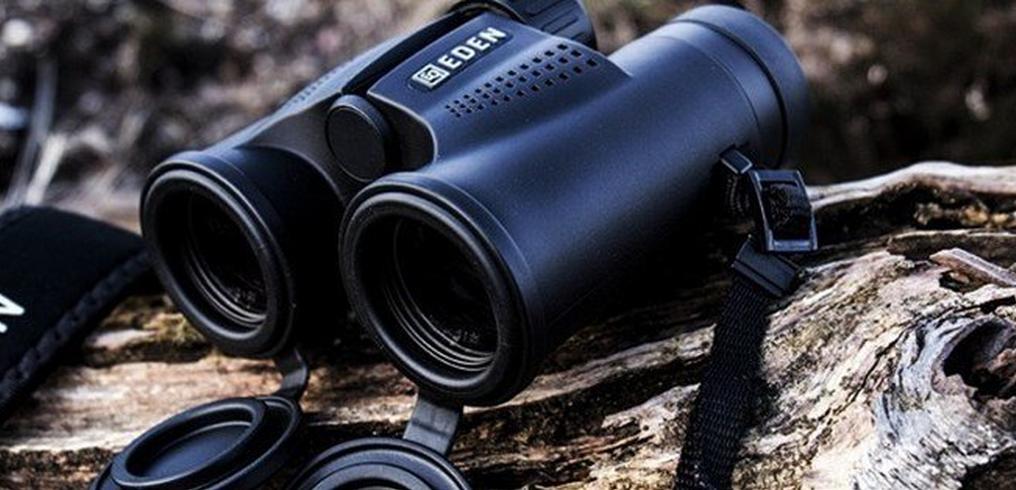11 things you should know about binoculars
In need of new binoculars, but having difficulty finding the right one? Not a mathematical marvel? Don’t worry, we wrote a practical review about the 11 most recurring binoculars specifications. So buckle up because here we go!
1: Magnification factor
Each pair of binoculars has a marker such as ‘8x42’. The first number (8 in this example) represents the magnification. In this case the object brought closer 8 times. So let’s say an object is located about 80 meters away, you will see it as if it is 10 meters away.
It might look appealing to purchase binoculars that magnify as much as possible. After all, the stronger the magnification, the better you will be able to see an object. However, this is not really how it works. First of all, the magnification factor immediately influences the exit pupil, twilight factor and the relative brightness. But more about that later.
Second of all, the stability of the bins might be compromised. Not only your object is magnified, the movements of your pair will be as well. With magnification factors of about 10x it will become quite difficult to keep the bins stable enough to keep the image from moving.
In addition, in general the shortest possible distance at which you can still focus increases for binoculars with a large magnification factor. Also something to take into account. Finally, the big boys amongst the binoculars are often also the heavy-duty and most expensive ones.
2: Diameter of the frontlens
The second number in the marker ‘8x42’ represents the diameter of the front lens, the first lens of the objective. The larger the number, the more light will be caught by the lens, the lighter the image will be. This is, therefore, key for binoculars that are often used during bad weather. Bins with a larger front lens are heavier.
You use the magnification factor and the diameter of the front lens to calculate the twilight factor, the exit pupil and the brightness of binoculars.
3: Twilight factor
For the twilight factor the following applies: the higher the twilight factor, the more details you will see when the light is not that good. Binoculars with a twilight factor below 16 can mostly be used during the day.
This is how you calculate the twilight factor: root (twilight factor x diameter objective)
4: Exit pupil
The diameter of the exit pupil is also important. This is the size of the beam that leaves the bins towards the eye. As long as it is larger than your own pupil it is easy to end up with a proper image. After all, the beam will fall over the edge of your pupil. If the exit pupil is smaller than the pupil of your eye it will be more difficult to get a clear image leaving you with black edges. The less (outdoor)light, the more you will be bothered by it, especially when you consider that your pupils are larger when there is not enough light. The size of the pupil can vary from 2 to 7 mm. An exit pupil with a value higher than 7 is therefore useless.
This is how you calculate the exit pupil: diameter objective: magnification factor
5: Brightness
Next we have a number that determines the brightness of binoculars. For this value the following applies: the higher the better. When you have a value below 15 it means that your pair should mainly be used during the day. Bins with a high brightness factor (7x50, 8x56, 9x63) are also called night vision binoculars.
This is how you calculate the brightness: the square of the exit pupil
6: Twilight factor or brightness
From the calculations the following can be stated: the diameter of the front lens has a positive effect on the twilight factor and the brightness. This means that both the twilight factor and the brightness improve if the diameter of the front lens is larger. This is a little different when you consider magnifications. A larger magnification means a higher twilight factor (which is great because you will see a lot more with little light) but does leave you with a lower brightness factor (which is not so great when you are dealing with normal light).
When you live in a country where twilight lasts relatively long it is often better to choose binoculars with a high twilight factor if you want to be able to see something. However, in, for instance, the tropics where twilight lasts for a relatively short period of time, brightness is more important, especially when you consider that you will be using the bins when the light it great outside.
The previous calculation does not take into account performance enhancing alterations of the glass. By using better types of glass and coatings you will also end up with a better intensity of the light. As such the geometric brightness does not say anything about the actual clarity of a pair of binoculars.
7: Eye relief
The eye relief is the distance from the ocular to the place where the binocular forms the image. This is an important detail for anyone who wears glasses because they need to bridge a bigger distance, from eye to binocular. An eye relief of 15 mm is comfortable for anyone who wears glasses. Many binoculars also have adjustable eye caps that will enable you to change the eye relief.
8: Dioptric correction
It is of course possible for anyone who wears glasses to look without glasses. The dioptric correction of the binoculars, combined with the focus enable you to end up with a sharp image. (One of the two oculars can independently be set up from the other. With it you can correct it based on the eyesight of the left and the right eye). This does, however, mean that you constantly have to put on and take off your glasses. A simple matter of trying to figure what works best for you.
9: Field of view
The field of view decreases as soon as the magnification factor increases, but also depends on the internal optics of the binoculars. The stronger the image is magnified, the smaller the overview will be. The field of view represents the meters you can horizontally see at a distance of 1000 meters. The larger the field of view, the easier it will be to ‘find’ and follow your object.
10: Depth of field
The image in the distance which you focus on is actually the only thing that is sharp. However, because people consider a slight degree of blurring to be sharp, something like depth of field arises. Depth of field is a value that cannot easily be determined. What to some might still be sharp enough could be unacceptable for the other.
You could, however, state that the depth of field decreases the larger the object is depicted. In other words, you can look at an object from the same vantage point with a larger magnification factor or look at the same object up close with the same magnification factor.
11: Coating
Coatings prevent reflection and the scattering of light. As a result you won’t lose as much light but you still end up with a better contrast. Untreated glass can reflect up to 5% of the light. Considering the fact that binoculars are comprised of multiple lenses of glass, the use of untreated glass would therefore mean a lot of loss of light. A single layer of anti-reflective coating could already decrease the loss with 1.5%. Adding multiple layers with different coatings could mean a loss of up to 0.2%. A damaged coating cannot be restored.
Good binoculars represent the colours of an object realistically and offer enough contrast. The quality of the optical elements and the coating have a major influence on this. A lesser quality pair of binoculars could cause a deviation of the realistic colours or leave you with a pale image.
12: Conclusion
Unfortunately there is no such thing as a pair of binoculars that scores best on all aspects. Fortunately, however, there are enough binoculars that are great on an all-round scale. Don’t let more expensive or larger bins mislead you, but always make sure that the binoculars you purchase fits your own situation and use. Want to learn more about the technique of binoculars or are you curious to find out what some difficult optical terms mean? If you do check out our binocular glossary.

